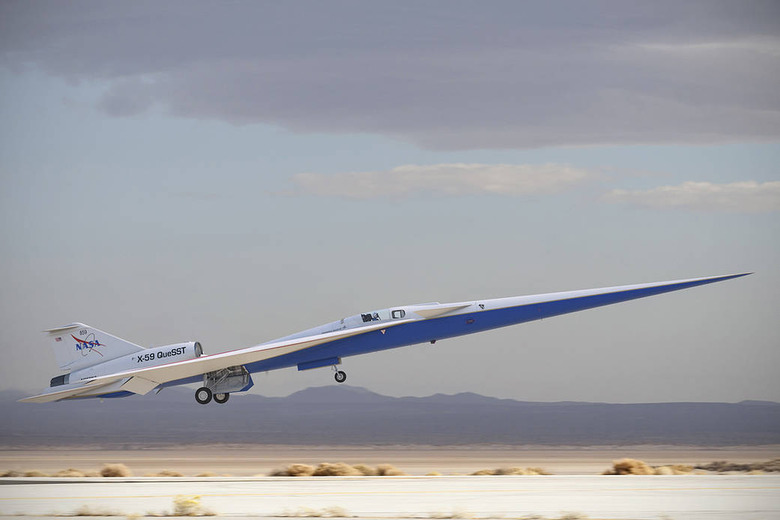NASA's X-59 Supersonic Stealth Jet Faces A Critical Test
Lockheed Martin has temporarily rehomed the X-59 Quiet SuperSonic Technology aircraft it is building for NASA, the space agency has announced. The supersonic plane has left Lockheed's California facility for a new temporary spot in Texas where it'll undergo "critical ground testing." The tests will serve as a major milestone on the path to the X-59's first flight.
Supersonic flight can revolutionize aerial transportation, but it has one major downside that has historically prevented its use over land: loud sonic booms. NASA hopes to change this by developing low-boom technology that, hopefully, will lead to changes in regulations and the ability to operate these ultra-fast aircraft over communities (via NASA).
The X-59 aircraft that'll provide data on and a demonstration of low-boom technologies isn't yet ready to hit the skies. However, NASA announced a brief update on the project this week revealing that it is moving one step closer to that eventual first flight. This year will start with ground testing the X-59 aircraft, something the space agency says is intended to ensure the aircraft can handle the substantial stresses that come with this type of flight.

Among other things, the X-59 team in Texas will also test the plane's fuel systems in addition to calibrating them. Once that is out of the way, the aircraft will be packed back up and shipped back to California for the next round of testing and other work. To keep things fun, the X-59's trip from California to Texas included a big red bow on the wrapped plane.
Assuming the space agency and Lockheed don't encounter any sort of big or continuous delays like the kind that impacted the James Webb observatory, the X-59 aircraft will begin flights in 2024. These demonstrations will happen over US communities; NASA will collect data on the sound produced during these flights and how the people in those regions respond to it.
Ordinarily, a supersonic aircraft will produce a very loud boom, but NASA says its X-59 will cut that sound down to a low "thump." The FAA has acknowledged these sorts of supersonic innovations and how the technology may necessitate future changes to current regulations. In November 2020, the agency said that it was assessing this new tech and how it may reduce the noise heard on land.
Fast-forward to January 2021, and the FAA teamed with the Department of Transportation to announce a final rule simplifying the process required to get supersonic flight testing in the US. Though there haven't yet been any big changes to these regulations, the FAA noted that it supports these innovations and work toward low-boom supersonic aircraft.
